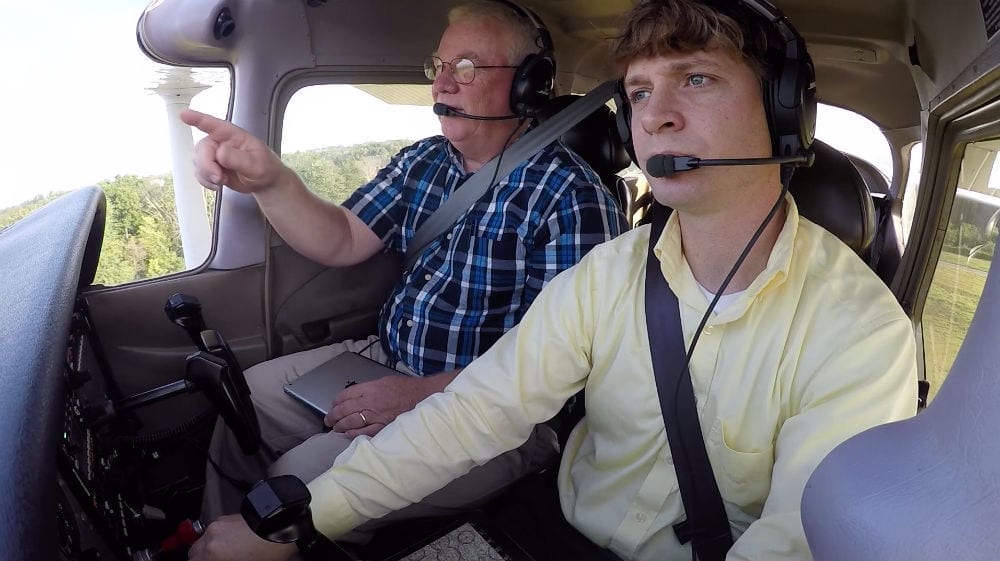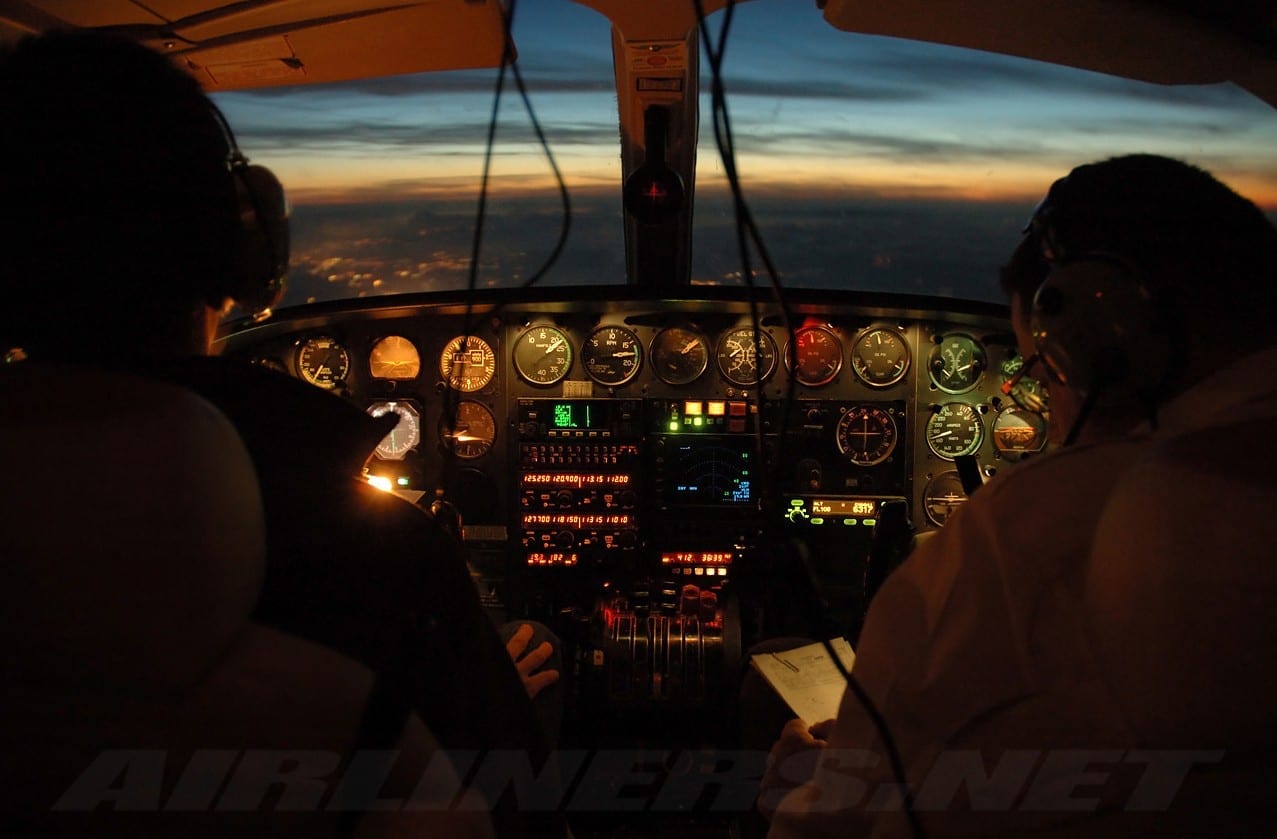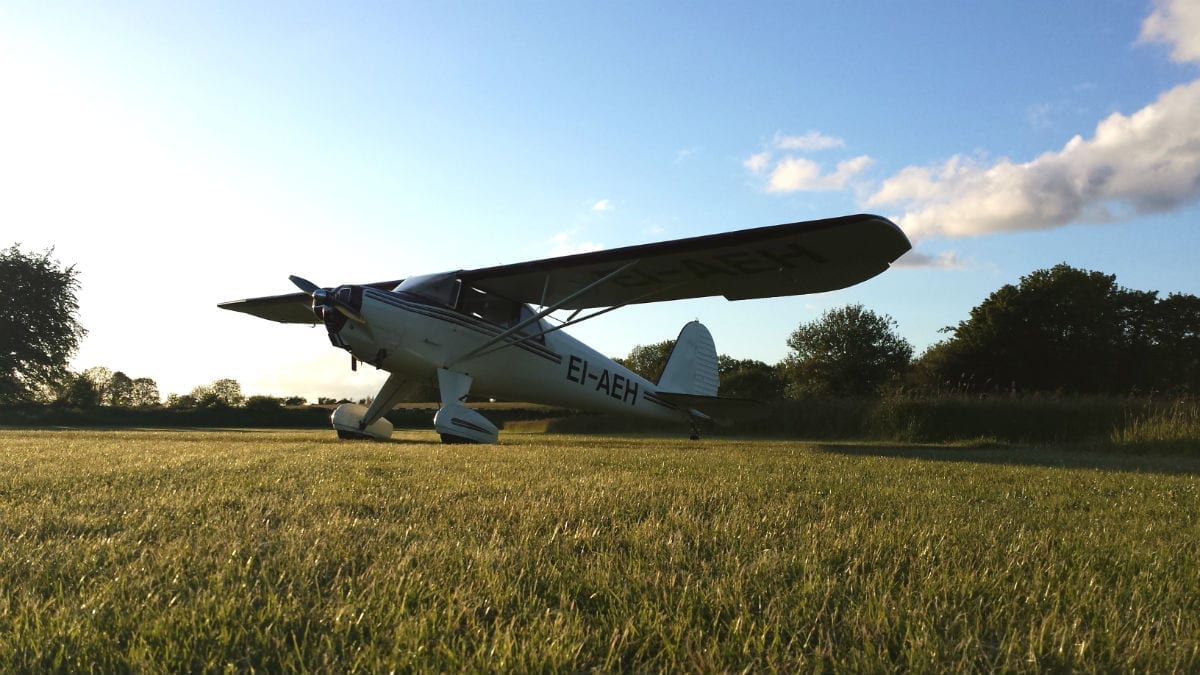
Don’t ruin a flying vacation with weather worries
John's blogSure, the convenience of traveling by general aviation is hard to beat, and as pilots we usually have a lot of fun just getting there. But there’s another factor that can quickly overshadow the fun - weather worries. I’ve battled this off and on for years, but a recent family trip to Disney World was almost ruined by my constant stressing about the weather.

Why night flying is special
OpinionNight flights are distinct. They are pretty rare for me. They seem unorthodox and more dangerous. It’s uncomfortable not being able to see everything as one would during the daylight hours. The excitement of my first night flight during training was unforgettable. The whole atmosphere around the airport was different. It was eerie.

Flying a Pitts Special over the Amazon
I was thereI am sitting in this brightly colored red, two seat, Pitts Special S2B stunt plane alone over the Atlantic Ocean at 9,500 feet. I have been flying out of sight from land for quite some time and occasionally the magnitude of the adventure I am undertaking sinks in and I have to mentally remind myself to take this trip one small step at a time.

Know when to fold em: how to avoid tunnel vision in the cockpit
John's blogHave you ever noticed that you become less and less flexible as a flight goes on? Decisions that once would have been easy and stress-free become fraught when you're close to home. It’s a natural human instinct, but it’s one pilots need to aggressively fight.

My (memorable) first flying lesson
I was thereFifteen hundred feet isn't much altitude, but it momentarily seemed Olympian as our formation turned onto the downwind leg of our traffic pattern, with the airfield looking like a precisely detailed model on our right. Another banked turn onto base leg, then onto final approach for a low-altitude flyby. We came level at about 30 feet, roaring past the showline - I was momentarily sorry I couldn't be down there and up here simultaneously!

Teaching flying over the years, part two: dealing with the students
Dick's blogWhen someone would come to me to learn to fly, the first question I would ask is why they wanted to take to take up flying. You want to guess what response I liked best? Because I always thought I wanted to fly was my hands-down favorite. Folks who came to flying with that thought in mind were always the best (easiest) students.

Teaching flying over the years
Dick's blogI became a flight instructor in 1953. I last renewed my CFI in 2016 and will let it lapse today (2/28/2018). There is no log entry for that because there was no flight. I’ll tell you why I let it lapse in a bit. For now, I’ll just say that it has to do with the FAA at its petty and officious best.

Flying to watch SpaceX launch the Falcon Heavy
I was thereFalcon Heavy was advertised as the most powerful liquid fuel rocket since the Saturn V. I bought close-in viewing tickets as soon as they went on sale. Public interest was high: all 3,000 tickets sold out in 24 hours. This was going to be big.

Air Facts turns 80: some things have changed, some have not
Dick's blogOn the 80th anniversary of AIR FACTS’ founding, I see two good questions: (1) What have been the major factors in the safety record improvement over the years and in particular the last couple of years? And, (2) Is there any way to reduce the risk even more? It is tempting to give technology a lot of potential credit for improvements but a look back throws a bucket of water on this.

Flying with a young child – is it possible?
TechniqueOne of the things I used to dream about before getting my license was to fly my wife and two-year old daughter around, sharing the experience of flying together. I would daydream about flying off to a fun destination, grab lunch (and coffee) and then enjoy a nice flight back to the home field. I often questioned if having an enjoyable flight was doable with a two-year old.

Spooked about night flying in singles?
Dick's blogThere will be a debate about flying at night in single-engine airplanes for as long as there are single-engine airplanes and it gets dark every night. That is a given. Recently the son of an old friend emailed and asked me what I thought about flying singles at night. My stock answer to pilots who express concern about this is simple: If you are not comfortable with it, don’t do it.

One chance to get it right: inadvertent IFR flying
I Can't Believe I Did ThatI immediately knew that my current situation was extremely serious. I was currently flying at 4000 feet and was trapped between two layers of cloud in a wide band of clear air. This “meat in the sandwich” scenario at the end of the day, in a low speed, basically instrumented aircraft with a relatively low-time pilot was about as bad as it could get.

Out of control – flying a vintage airplane in Ireland
I was there“Don’t you have to get permission from ATC or someone?” That’s the most common question I get when people discover I launch myself into the sky from a field. Confusion then turns to disbelief when I tell them “nope.” I usually let that little pot of incredulity simmer for a while; sometimes I’ll stir things with a “why would I need permission?”

Flying on edge – getting down to the nitty-gritty
Dick's blogMargins are a basic in safer flying. Maybe that’s just another way of saying to always cut yourself a little slack, and what it means is to stay away from the edges of the envelope. Where this often becomes critical is when the airplane is being asked to do something it either won’t do, or will just barely do. That is when precise flying is required and to use an old term, it often has to be done by the seat of your pants.

A sticky situation: flying blind in a vintage airplane
I was thereSeconds after the smoke started, I was looking out the windshield and could see smoke coming from around the propeller and all of a sudden: Whoosh! The windshield was completely covered with brown oil, and I could see nothing out of it. I shut off the engine with the mag switch and pointed the nose down steeply. I wanted to get the airplane on the ground now!

Are you ready? Flying the Alaska bush
I was thereI’m going to fly along with you as you take your Cessna 206 Stationair II for a flight to pick up a client out in the flat country beyond the Alaska Range. Your client lives in a log cabin along the Kuskokwim River, downstream from the village of Aniak. You’ve made sure to have the necessary flight charts with you.

Turbulent flying lessons: windy tales
Dick's blogThe potential for turbulence should be an integral part of pre- and in-flight weather study. And I found over the years that experience is the best teacher because with turbulence what you feel is what you get. If flying IFR in clouds, the fact that turbulence there makes many riders uneasy and uncomfortable has to be acknowledged, and even some pilots riding as passengers get antsy in bumpy clouds.

The scan: why instrument flying is an art, not a science
John's blogAsk a native English speaker what their strategy is for writing a sentence and you'll probably get a blank stare. After all, most of us don't read a textbook and come up with a methodical approach to grammar before we write an email. So why do we insist on this same robotic approach when teaching instrument flying?

The test: when things go wrong in a DC-3
I was thereThis is no way to begin a trip and I knew it. What if I lose an engine on takeoff tonight in this crud? Nothing like the real thing to test a pilot! Every pilot will tell you there is a big difference between engine-out flying during training or a check ride, and engine-out flying for real. But how will I do if it happens tonight?

Flying beyond a doubt: an epic DC-3 journey
I was thereWe know that mechanical things fail, people make mistakes and aviation, like the sea, is inherently unforgiving of failure or mistake. That thought was on my mind recently when we took off from Burlington, Vermont, aboard a classic old airplane, a twin engine DC-3 built in 1945. We were headed for Europe, but less than three hours later, in a flash event, both the failure and the mistake happened at the same time.
